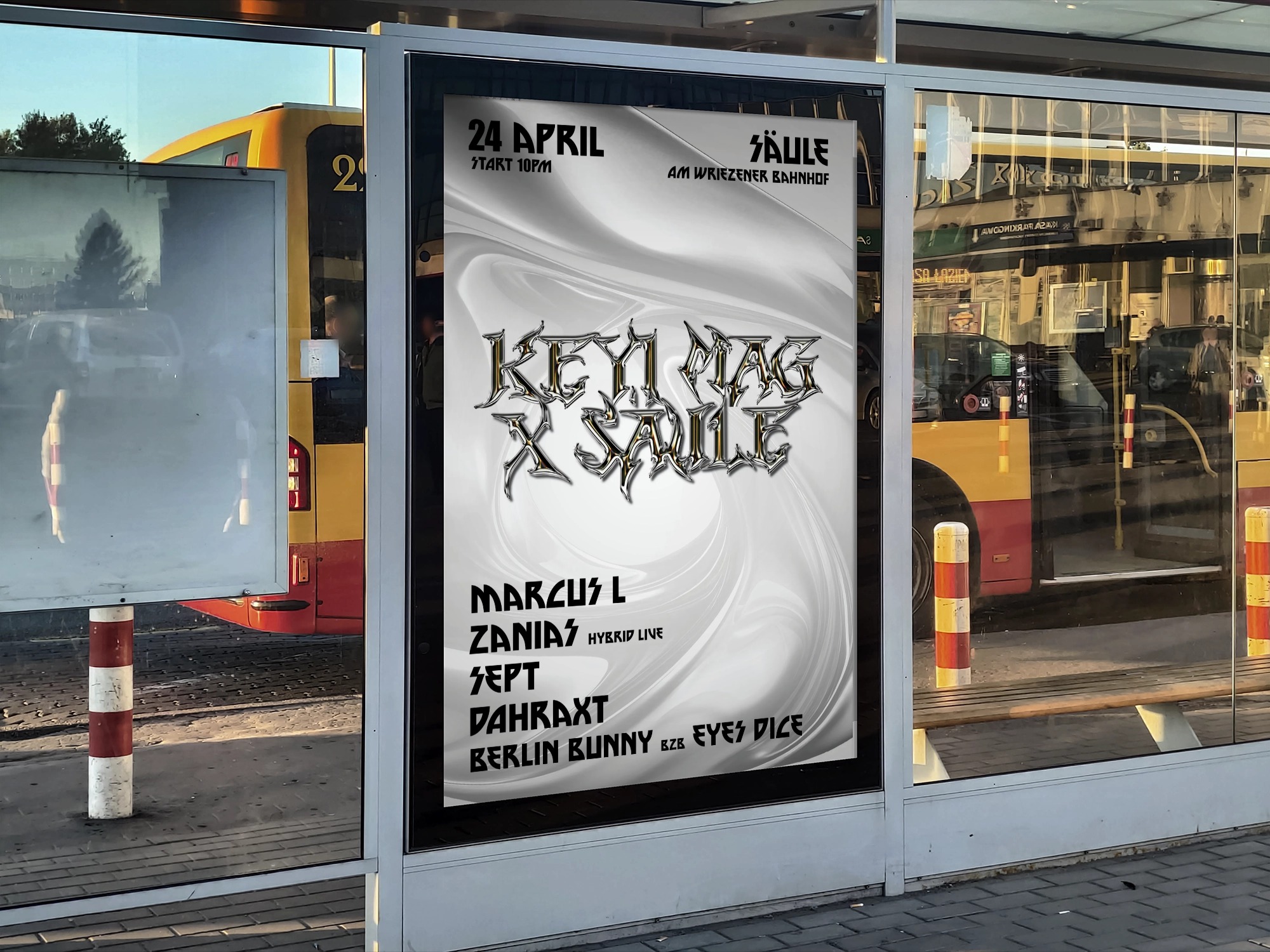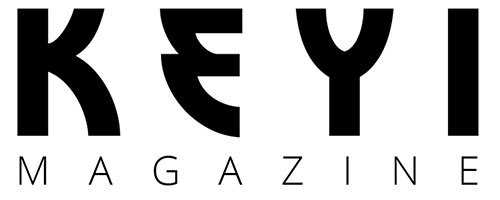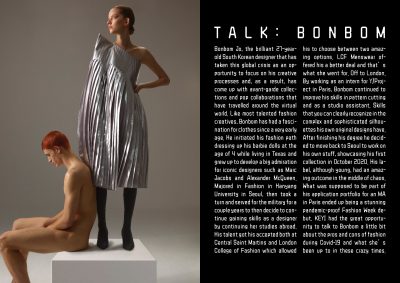German-Chinese designer Chenggang Liu uses fashion as a means to connect worlds and make the unseen visible. Fascinated by the micro and macro, and by the two cultures that have shaped his perspective, Liu uses fashion as a means to convey the delicate balance of power that underlies the human experience.
Looking through Liu’s past work, education, and influences, themes emerge of a desire to allow the unseen to be seen– particularly in his collection “Bacteria” – The Second Skin. Liu is influenced by the colors, textures, and the nature of bacteria as something that is around us at all times but not often acknowledged, seen, or understood.
In this fascinating interview, Liu shares the creative process, inspiration, and overarching themes behind his work, with projections for his future as a designer, and the future of the fashion industry as technology and humanity increasingly overlap.
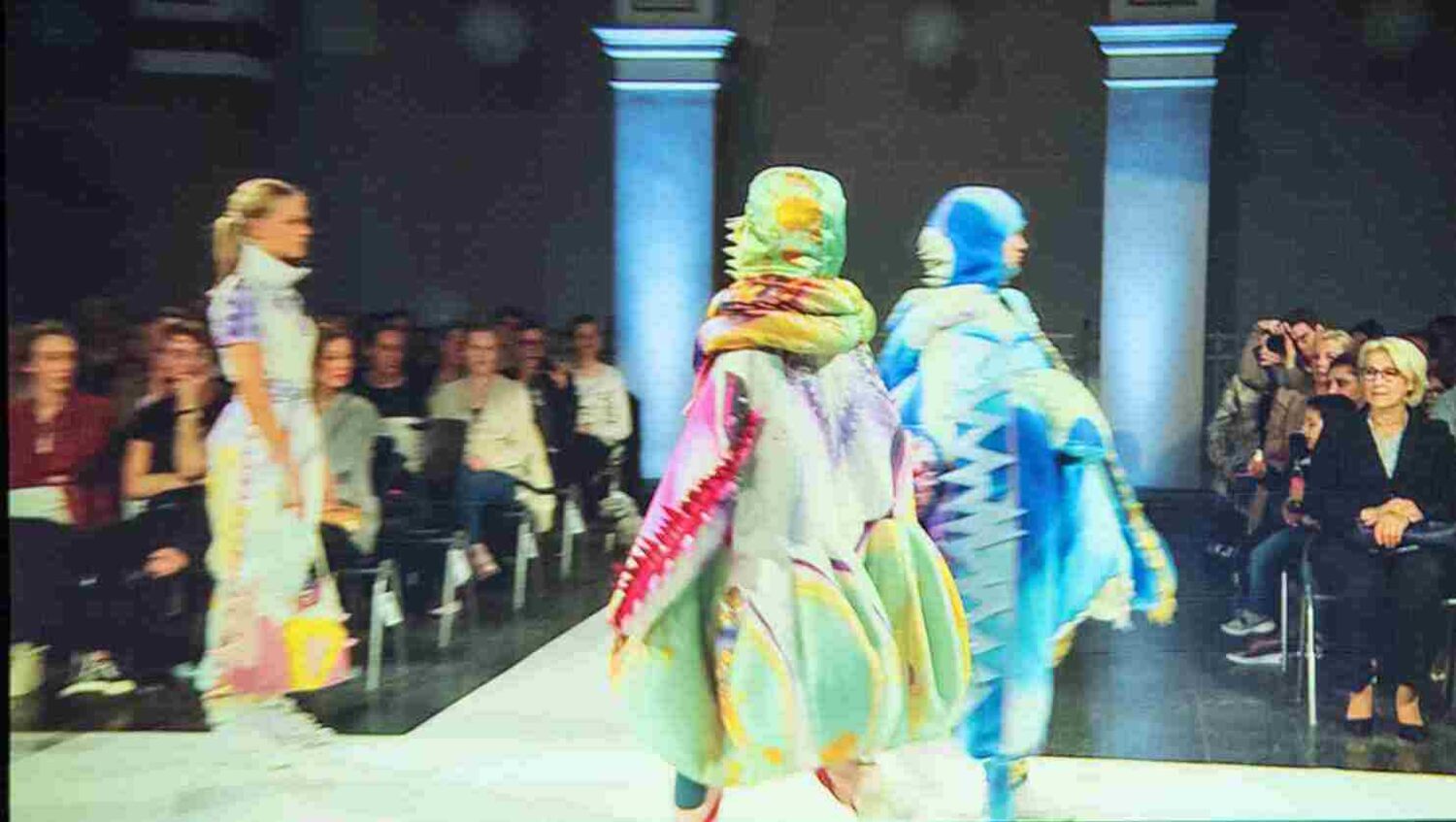
Thank you for finding the time for an interview, we’re excited to talk with you. I want to start with your Bachelor collection from AMD Hamburg, titled “Bacteria” – The Second Skin. Notably, this collection from 2019 was created shortly before the global pandemic. This collection portrays bacteria as colorful, geometric, and beautiful– but also a key element of the human ecosystem that we are comfortable disregarding. Your more recent work evolves on those bacteria-influenced silhouettes from the 2019 collection, but has significantly lost the bright colorways.
Did the pandemic have any influence on your stylistic interpretation of bacteria as a second skin, or were there any other motivating factors behind the shift from color to mainly black garments?
My collection “”Bacteria“ – The second skin” is inspired by biology. I have depicted the diversity of bacteria through rich geometric shapes and vibrant colors to show their beauty and complexity and emphasize their role as an important part of the ecosystem.

During the pandemic, the focus shifted to protection, isolation and invisible risks. These collective emotions prompted me to look at the other side of microorganisms – an invisible and uncontrollable force. Black was not only an aesthetic choice for me, but also a reflection of human emotions during the pandemic. It represents fear, contemplation and reverence for this microscopic force. In contrast to the vibrant colors, black conveys greater emotional depth and inner tension. It not only represents the unknown technology and evolution, but also combines beautifully with digital design and experimental materials to express my thoughts on the future human existence and its challenges.
What initially inspired you to portray bacteria as a second skin through fashion? Do you find a sense of power within this simultaneously protective and potentially harmful layer of invisible organisms?
This is a topic that I have been working on for a long time: the symbiotic relationship between humans and microorganisms. This relationship exists not only on our skin, but also inside us. I am fascinated by this symbiosis, be it between the human body and microbes or between humans and the universe. It reminds me of the theme of fractals that I took up in my 23SS collection – everything is infinite and interconnected.


I see the relationship between microorganisms and us humans in a similar way to the relationship between living beings and the earth. What is the earth? It is not just made up of inorganic materials, but is co-created by us – carbon and silicon-based living beings. We can preserve the ecological balance of the earth or destroy our own home. This tension and contradiction fascinates me and motivates me to explore through fashion the “invisible forces” that shape our relationship with the world.
The depiction of bacteria as a “second skin” is not just a design choice for me, but also a deeper exploration of power, balance and the symbiosis that forms the basis of our existence.
Building off of the previous question, do you find that in the same way that good or bad bacteria can respectively protect or harm us, fashion can do the same? As humans, we use fashion and style as tools to manipulate the way others see us.
In what ways do we use fashion to protect or harm us, and in your opinion, what makes good versus bad fashion?
Yes, fashion works in the same way. I see fashion as a kind of pheromone that radiates outwards. It is not only a physical shell for people, but also a psychological barrier. But the fashion industry is also the second biggest polluter after the oil industry.
For people, good fashion often means good design, high-quality fabrics and fashion that meets their personal needs. But from an ecological point of view, good fashion should also conserve resources, cause less pollution and minimize social exploitation. Sustainable fashion that uses fewer resources throughout the value creation process and is recyclable is the way to a better future.

That’s why I see “good fashion” as a balance of culture, society and ecology that not only carries aesthetic but also sustainable and responsible values.
What aspects of your identity have guided you into design? Who are some of your design influences?
For me, design is a form of self-expression. My education in art and painting was particularly formative for me, where I learned to express myself through the language of painting – through subjective colors and shapes.

My studies in Europe gave me the opportunity to learn about experimental and conceptual design approaches and broaden my creative perspectives. Since childhood, I have been passionate about nature and science, especially the details of the microscopic world. This curiosity about nature and life drives my design practice.
I hope that my work reflects the wonderful connection between the microcosm and the macrocosm. In addition, my designs are often inspired by emotions and narratives. I believe that clothing is not only functional, but also a medium that can express complex feelings and stories.

In creating garments that are influenced by the microscopic organisms that fill our world, you are able to make the “unseen” seen. Fashion has historically been used as a medium that allows both designers and consumers to make that possible, particularly relating to gender, class, and race. However, high fashion is an industry fuelled by the wealthy consumer.
In this industry, what unseen demographics, identities, or causes would you hope to make seen through your art?
Yes, fashion is a medium that not only conveys aesthetic values, but is also an important tool for social and cultural narratives. It challenges us to think about the meaning of fashion and luxury – what is visible and what gives us invisible messages and definitions. Designers and brands are often the center of attention, while the many workers behind the scenes of supply chains are often overlooked. I hope that in the future, the fashion industry will become more transparent and the exploitation of workers in low-wage countries will be reduced.
Fashion is a crucial tool for overcoming gender boundaries. Clothing can give everyone the freedom to express themselves.

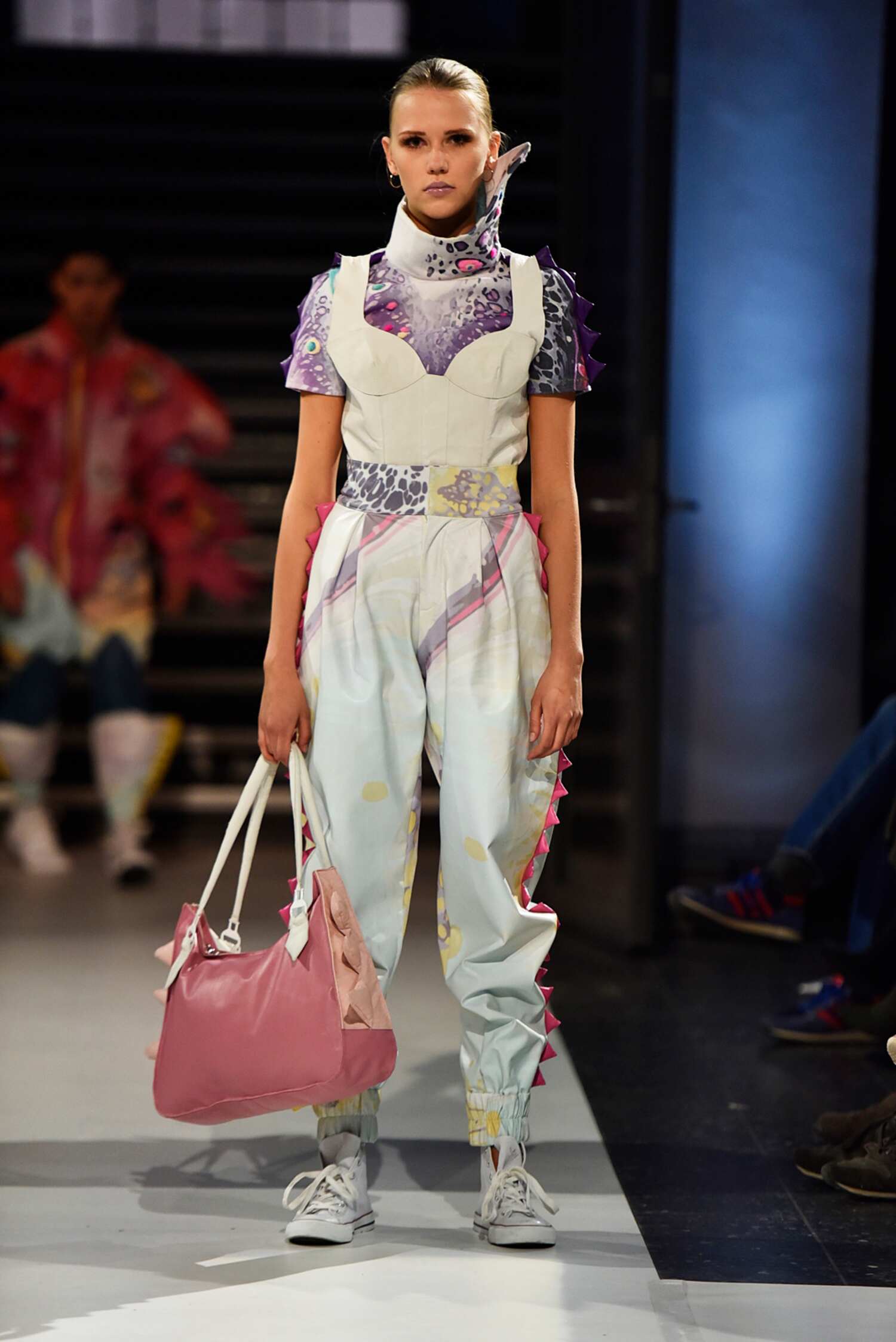
The true value of high fashion lies not in luxury, but in its potential to promote cultural dialog, social inclusion and environmental protection.
By making the “invisible” visible, fashion can create deeper connections between people and nature, and between people themselves, while giving fashion a deeper, more meaningful role.
I understand that you worked with the Chinese independent fashion label ANNAKIKI. According to the ANNAKIKI website, “Anna [Yang] is also the first fashion designer to present an AI-empowered collection”. Your work seems to be heavily influenced by an interest in science. Bacteria is within natural science, while in contrast, AI is modern technology.
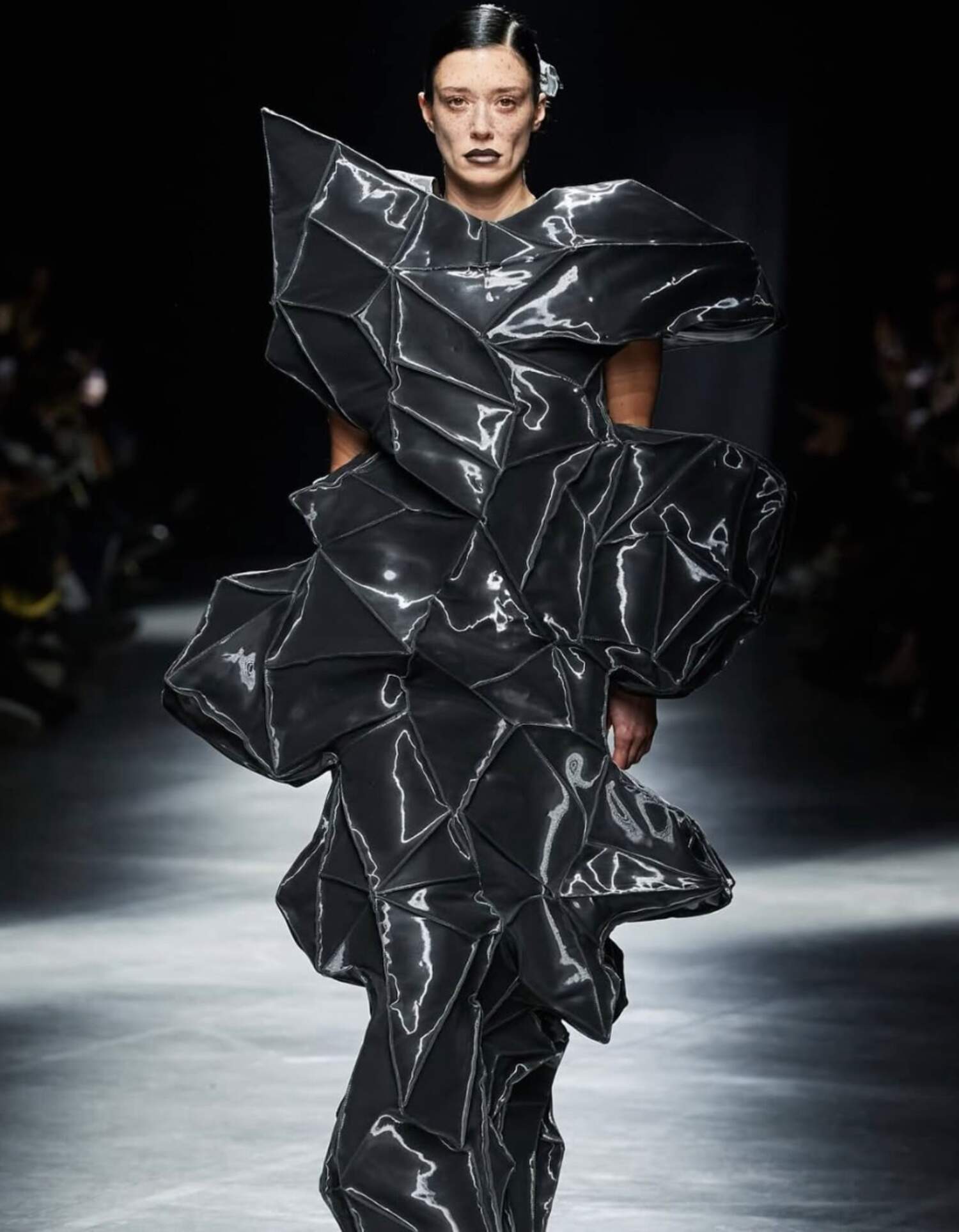
How do you feel about AI being incorporated more and more into fashion, and do you see yourself incorporating it into your future work?
Artificial intelligence originates from the natural sciences and was developed to explore them in greater depth. We live in an era in which humans and artificial intelligence exist together. In fashion, AI is already having a major impact on the entire value chain. It helps us to increase efficiency and optimize processes, and we need it to further develop the fashion industry.
What we perceive as artificial intelligence today is just the beginning – the future scope for development is hard to predict. The difference between humans and AI lies in the fact that humans exist as independent individuals.
For me, however, AI is not something that replaces us, but a valuable partner that helps me to expand my own creativity and self-expression.
KEYI is a publication that aims to bridge the cultural space between the continents of Europe and Asia. As a designer who resides in both Berlin and Shenzhen, can you tell me about your experience creating art and fashion for these different continents and cultures? What differences stand in your way, and what differences inspire you?
For me, Berlin is the city that offers the most creative inspiration for a designer. The artistic freedom and avant-garde atmosphere here are unique. Shenzhen, in the heart of Guangdong, has the most complete supply chain in the fashion industry, which greatly increases efficiency in this fast-paced sector. I have also worked in other Chinese cities, and overall the whole supply chain in China is very well organized.
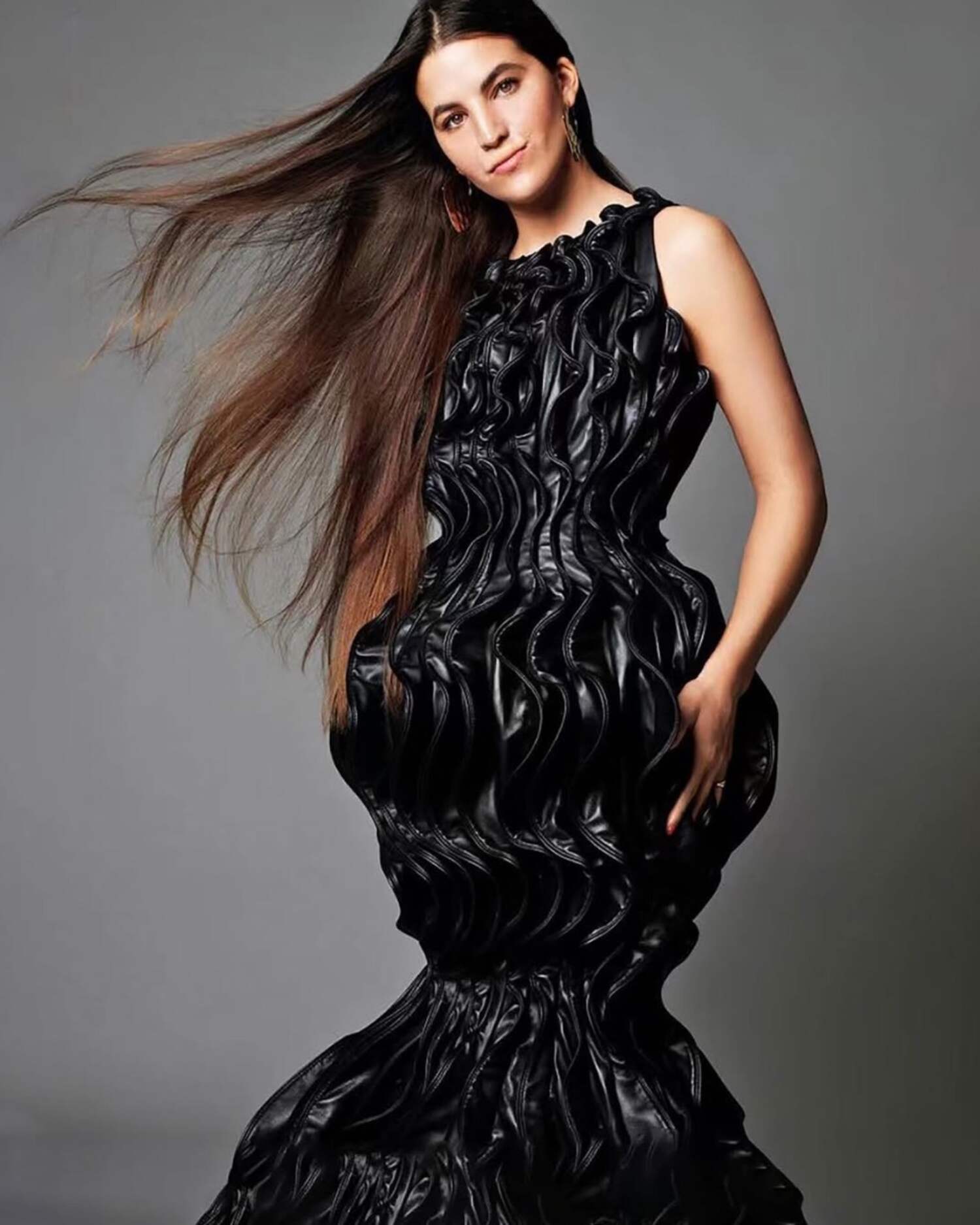
The cultural differences between Europe and Asia are still significant. But it is precisely these cultural contrasts that create new perspectives that allow me to look at the world and society from a different angle and integrate them into my work.
You describe yourself as a “Fashion / Costume /Jewelry Designer”. I’m curious about your work with costumes, and if you’ve collaborated with other artists to bring certain characters or concepts to life through your designs?
Yes, I have always had a great interest in costume design. I find that costumes offer a particularly powerful opportunity for self-expression. Even as a child, I experimented with different fabrics and materials and discovered how clothes can tell stories and evoke emotions. For me, costume design combines history, art and craft to bring characters and worlds to life on stage or in movies. Costumes are more than just clothing – they are a medium of expression and carry cultural, social and emotional messages.
In December 2019, I worked with Professor Christian Striboll from the HfMT Hamburg and the musician Michael Brailey on the short film “Waters of Love”, for which I designed the costumes.
I also collaborated with Chinese artists to design costumes for music videos, conveying complex emotions and narratives through fashion.
One element of your work that really stands out to me is texture. Some of the pieces truly do look like a layer of skin, although perhaps not human. What is your thought process behind choosing a texture and finding the material that communicates the intended appearance of the piece? Or, does your process begin by finding the material and then being inspired to incorporate that texture into a design?
Texture is one of the central means of expression in my design. For me, it is not only a visual or tactile quality, but also a narrative tool that conveys emotions, concepts and even philosophical reflections. My creative process moves between “material-driven” and “concept-driven”. Sometimes it is the unique material itself that sparks my design inspiration. In most cases, however, I start with a clear design idea and a vision of what I want the collection to express, and then look for the material that best embodies that concept. However, the design is a constantly flowing process, always taking in new inspiration, which is why I sometimes change or adapt the material.
I particularly enjoy experimenting to discover new possibilities, with a particular interest in mycelia. I find the varied textures created by their regular but also random patterns fascinating and will continue to explore what possibilities mycelia can offer the fashion industry.
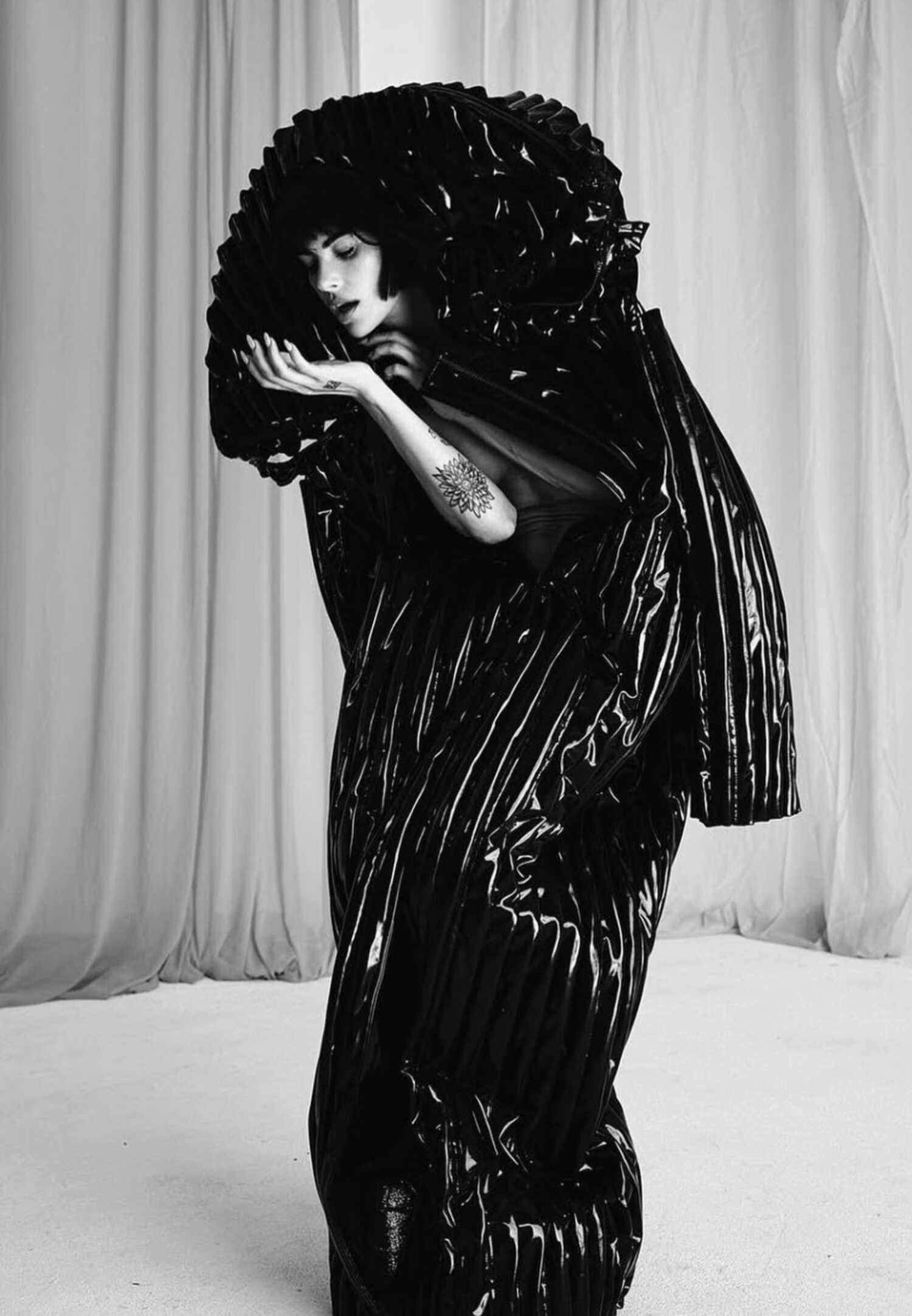
For me, texture is not only an external beauty, but also a metaphor. Some of my works have surfaces that look like non-human skin. These designs aim to blur the boundaries between human and nature and human and technology, and explore how future biotechnologies might change our bodies and identities.
I hope that my texture designs will provide a multi-dimensional experience for viewers and wearers. Tactile sensation, visual perception and even subtle auditory feedback are all part of my design. All of these elements work together to enhance the emotions and narratives I want to convey.
Based on your current work, it seems as though nature and bacteria still heavily influence your silhouettes. Where else does your current inspiration come from, and what inspires you for the future?
Nature and the world of microorganisms remain at the heart of my design language. They help me to explore the connection between the microcosm and the macrocosm. These “invisible forces” inspire my work and allow me to translate complex biological structures into visual and tactile experiences.
I am fascinated by digital fashion and its possibilities. Technologies such as 3D printing and digital generation open up completely new ways for me to create complex geometric shapes. Through the use of technology, I want to blur the boundaries between nature and artificial creation. This futuristic approach fills me with enthusiasm and optimism for the future of design.

Sustainability is a key pillar of my inspiration. I believe that the design of the future must take on more social responsibility – not only to create aesthetic value, but also to have a positive impact on the environment and society.
The future of the human body fascinates me: perhaps it will be altered, enhanced or even completely redesigned. I am curious about the relationship between humans and technology and how it will shape our identity and way of life.
My goal is to build a bridge between nature, technology and culture through my design. In the future, I want to continue experimenting, pushing the boundaries of traditional fashion and making the “invisible world” visible through innovative shapes and materials. At the same time, I want my designs to carry a deeper social and environmental meaning.
I am convinced that fashion is not only an expression of beauty, but also a force that can drive change.
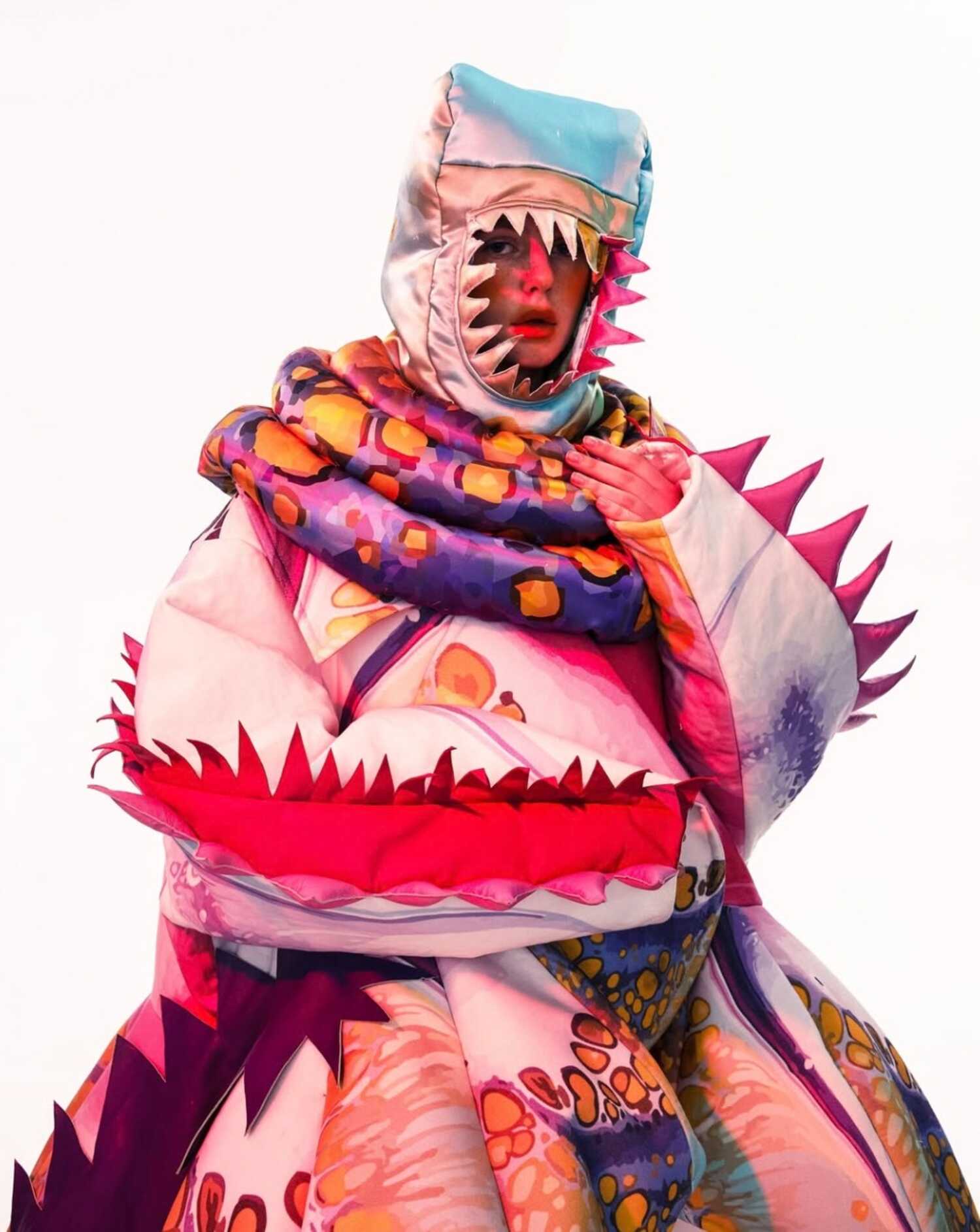
Follow Chenggang Liu here
Interview and article by Kate Wallner
More fashion content -> Click here
Our next event : Säule, Berghain – 24.04.2025 -> more info here
